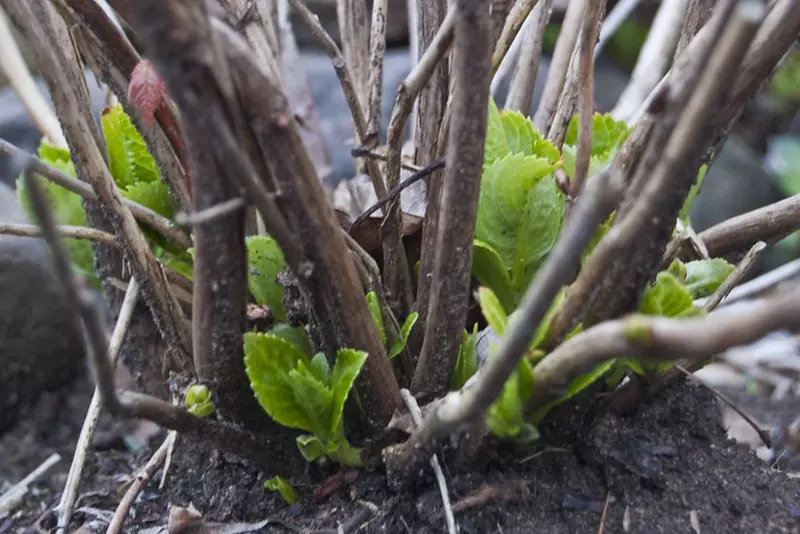
Why Prune Hydrangeas in Spring?
Learn when and how to prune your hydrangeas this spring with our detailed guide. Includes tips for tool preparation and proper pruning techniques.
Read MoreHydrangeas are beloved for their vibrant blooms, but in cold climates, they require special care to withstand harsh winter conditions. Implementing protective measures ensures their health and promotes abundant flowering in the following season.
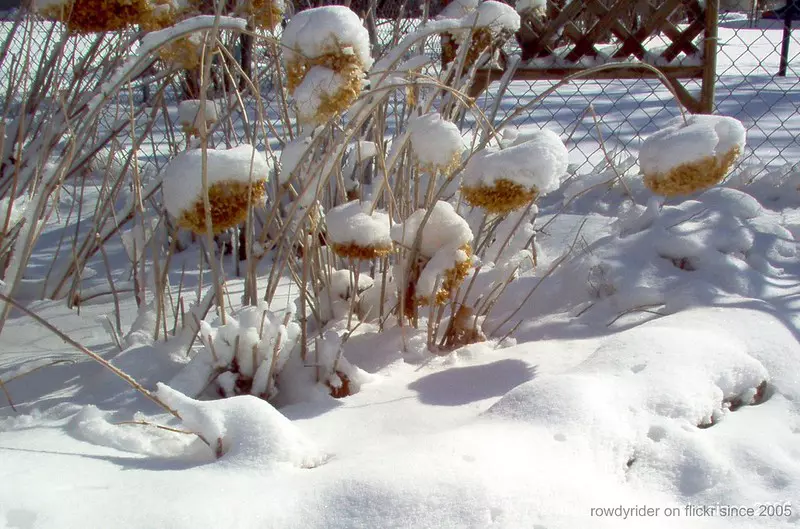
Hydrangeas' susceptibility to cold damage is influenced by several factors:

Different hydrangea species exhibit varying levels of cold tolerance:
Indicators that hydrangeas have suffered from cold injury include:

To mitigate cold damage, consider the following strategies:
Applying a layer of mulch around hydrangeas acts as insulation, safeguarding roots from the harsh fluctuations of winter temperatures. This protective barrier helps prevent frost heaving, where plants are pushed out of the ground due to soil freezing and thawing cycles.
Mulch aids in retaining soil moisture by reducing evaporation. This is particularly beneficial during winter when dry winds and low humidity can deplete soil moisture levels, ensuring hydrangeas remain hydrated during dormancy.
A sufficient mulch layer inhibits weed germination and growth. By minimising competition for nutrients and water, hydrangeas can thrive without the stress imposed by invasive weeds.
Organic mulches, such as compost or well-rotted manure, decompose over time, enriching the soil with essential nutrients and enhancing its structure. This process fosters a healthier root environment, promoting vigorous growth in the following season.
Beyond functional benefits, mulch provides a tidy and uniform appearance to garden beds, contributing to the overall visual appeal of the landscape during the barren winter months.
Hydrangeas are classified based on their blooming habits, which influences the appropriate pruning time:
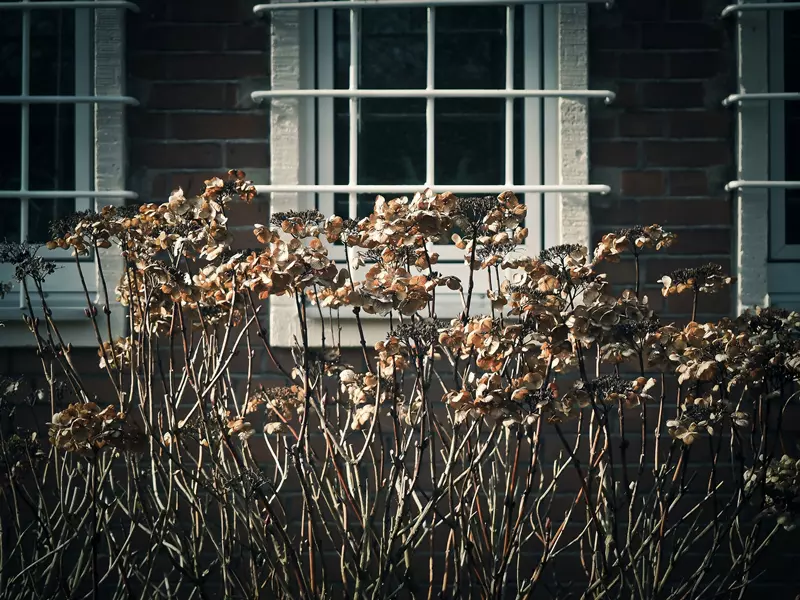
Proper pruning not only shapes hydrangeas but also enhances their resilience during winter:
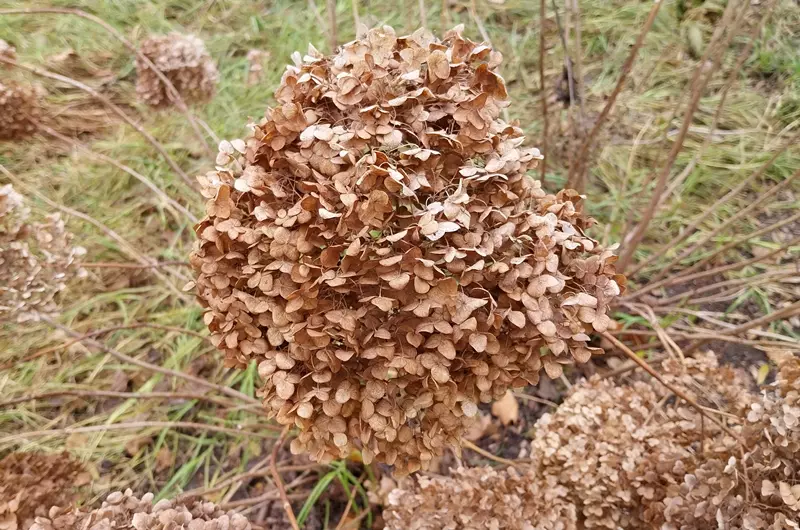
Beyond pruning, consider these practices to safeguard hydrangeas during colder months:
Shielding hydrangeas with appropriate coverings can significantly reduce frost damage:
The location of hydrangeas plays a crucial role in their winter survival:
Proper soil care enhances hydrangeas' resilience to winter stress:
Adequate hydration before winter dormancy is vital:
Potted hydrangeas require special attention:
Mulching is a vital horticultural practice that involves covering the soil surface with organic or inorganic materials. For hydrangeas situated in frost-prone areas, mulching offers several benefits:
Choosing the right mulch is crucial for effective frost protection:
Applying mulch at the correct time maximises its protective benefits:
Implementing correct mulching methods is essential for effectiveness:
Regular maintenance of the mulch layer ensures ongoing protection:
Young hydrangeas are particularly susceptible to winter damage due to their underdeveloped root systems and tender stems. Exposure to frost can lead to desiccation, dieback, and reduced vitality in the following growing season. Implementing protective measures is essential to ensure their survival and robust growth.
Applying a thick layer of organic mulch around the base of young hydrangeas helps insulate the roots and maintain soil moisture. Materials such as straw, pine needles, or shredded leaves are ideal choices. Ensure the mulch layer is approximately 5–7.5 cm (2–3 inches) deep and extends to the plant's drip line. Avoid piling mulch directly against the stems to prevent rot.
Utilising physical barriers can shield young hydrangeas from harsh winter conditions:
Proper hydration before the onset of winter is crucial. Water young hydrangeas thoroughly during autumn, ensuring the soil is moist as the ground begins to freeze. This practice helps prevent root desiccation during dormancy.
Planting hydrangeas in locations that offer natural protection can mitigate winter damage:
As temperatures rise, gradually remove protective coverings to acclimate plants to the changing conditions. Inspect for any signs of damage and prune affected areas to promote healthy new growth. Applying a balanced fertiliser in early spring can further support recovery and development.
Understanding the specific hardiness of your hydrangea species is crucial. For instance, Hydrangea quercifolia (oak-leaved hydrangea) is hardy in most parts of the UK even in severe winters, while Hydrangea anomala (Japanese climbing hydrangea) requires shelter from cold, drying winds.
Applying a thick layer of organic mulch, such as well-rotted manure or garden compost, around the base of hydrangeas can protect the root system from freezing temperatures. Ensure the mulch extends to the plant's drip line and is applied in mid to late autumn before the first hard frost.
Building physical barriers can shield hydrangeas from harsh winter conditions:
Planting hydrangeas in sheltered areas, such as against south-facing walls, can provide additional warmth and protection from cold winds. This strategic placement can significantly enhance their resilience during severe winters.
Proper pruning is essential for winter preparation:
Ensure hydrangeas are well-watered during autumn to help them withstand winter desiccation. However, avoid waterlogging, as excessive moisture can lead to root rot during freeze-thaw cycles.
Regularly inspect protective structures and mulch layers throughout winter, replenishing or adjusting them as necessary to maintain effective protection against severe weather conditions.
In early spring, inspect your hydrangea for signs of life:
If no signs of growth are evident by late spring, the plant may have suffered significant winter damage. However, some hydrangeas are slow to emerge; patience is key.
Several factors can inhibit hydrangea growth following severe winter conditions:
To mitigate these issues, ensure proper winter protection through mulching and shielding plants from harsh conditions.
Yes, applying fertiliser in early spring can promote healthy growth:
Avoid over-fertilising, as excessive nutrients can lead to lush foliage with fewer blooms.
Pruning practices depend on the hydrangea species:
Proper timing ensures optimal flowering and plant health.
Implement the following strategies to safeguard hydrangeas from frost:
These measures help maintain plant vitality during cold spells.
Hydrangeas may appear lifeless post-winter, but this doesn't always indicate death:
With proper care and patience, many hydrangeas recover from winter stress.
Mophead hydrangeas (Hydrangea macrophylla) are renowned for their large, rounded flower clusters and vibrant colours. However, their susceptibility to cold weather poses challenges during winter months.
Apply a 5–7.5 cm (2–3 inch) layer of organic mulch, such as well-rotted manure or garden compost, around the base of the plant to insulate roots and retain soil moisture.
Leave the faded flowerheads on the plant over winter to provide frost protection for the tender growth buds below. Remove the dead flowerheads in early spring, cutting back the stem to the first strong, healthy pair of buds down from the faded bloom.
In areas prone to severe frost, cover plants with horticultural fleece or burlap to shield them from cold winds and freezing temperatures.
Plant hydrangeas in sheltered locations, such as against south-facing walls, to provide additional warmth and protection from cold winds.
Regularly inspect plants for signs of damage and adjust protective measures as necessary. Ensure mulch remains in place and coverings are secure during adverse weather conditions.
Oakleaf hydrangeas (Hydrangea quercifolia) are deciduous shrubs known for their distinctive lobed leaves and conical flower clusters. While generally hardy, they can be susceptible to frost damage, particularly in colder climates.
Frost occurs when temperatures drop below 0°C (32°F), leading to ice formation within plant tissues. This can cause cell damage and impair the hydrangea's overall health. Monitoring local weather forecasts during late autumn and early spring is crucial to anticipate frost events.
Applying a 5–10 cm (2–4 inch) layer of organic mulch, such as shredded bark or compost, around the base of the plant helps insulate the roots and maintain soil moisture. Ensure the mulch extends to the plant’s drip line, covering the entire root zone, but avoid piling it directly against the stem to prevent rot.
Prune oakleaf hydrangeas immediately after flowering, as they bloom on old wood. Avoid heavy pruning in late autumn, as this can stimulate new growth susceptible to frost damage. Removing dead or damaged wood and shaping the plant as desired is recommended.
In regions prone to severe frost, cover the hydrangea with horticultural fleece or burlap during frost warnings. This provides a barrier against cold temperatures and harsh winds. Ensure the covering does not touch the foliage directly and is secured to prevent displacement by wind.
Plant oakleaf hydrangeas in sheltered locations, such as near walls or hedges, to reduce exposure to cold winds. A sunny to semi-shady spot with well-drained, humus-rich soil is ideal. Avoid planting in frost pockets or low-lying areas where cold air tends to settle.
If frost damage occurs, wait until late spring to assess the extent. Prune back affected areas to healthy growth, making cuts just above a pair of healthy buds. This encourages new growth and helps maintain the plant's shape.
Climbing hydrangeas (Hydrangea anomala subsp. petiolaris) are deciduous vines known for their ability to ascend walls and trellises, producing lush foliage and lacy white flowers. While hardy, they require specific care to withstand cold winter conditions.
Ensure the plant is well-watered during autumn, as adequate soil moisture helps roots endure winter stress. Continue watering during winter if the ground does not freeze solid, but allow the soil to dry slightly between waterings to prevent root rot.
Apply a 5–10 cm (2–4 inch) layer of organic mulch, such as bark chips or straw, around the base of the plant after the ground freezes. This insulates the roots against temperature fluctuations and conserves soil moisture. Avoid piling mulch directly against the stem to prevent rot.
Refrain from pruning in late autumn or winter, as this can remove dormant flower buds. Instead, prune immediately after flowering in late spring or early summer to maintain shape and encourage healthy growth.
In regions susceptible to severe frost, cover the plant with breathable materials like burlap or horticultural fleece during frost warnings. This shields the plant from cold winds and freezing temperatures. Ensure coverings are secured and do not press directly on the foliage to allow air circulation.
Plant climbing hydrangeas in sheltered locations, such as against south-facing walls, which can provide warmth and protection from harsh winds. Avoid planting in low-lying areas where cold air settles.
After the last frost, remove any protective coverings and inspect the plant for winter damage. Prune dead or damaged wood back to healthy tissue to promote vigorous new growth. Apply a balanced fertiliser in early spring to support recovery and flowering.
Protecting hydrangeas during winter in cold climates involves strategic mulching, appropriate pruning practices, and additional protective measures. By implementing these steps, gardeners can ensure their hydrangeas remain healthy and vibrant, ready to produce stunning blooms in the spring.

Learn when and how to prune your hydrangeas this spring with our detailed guide. Includes tips for tool preparation and proper pruning techniques.
Read More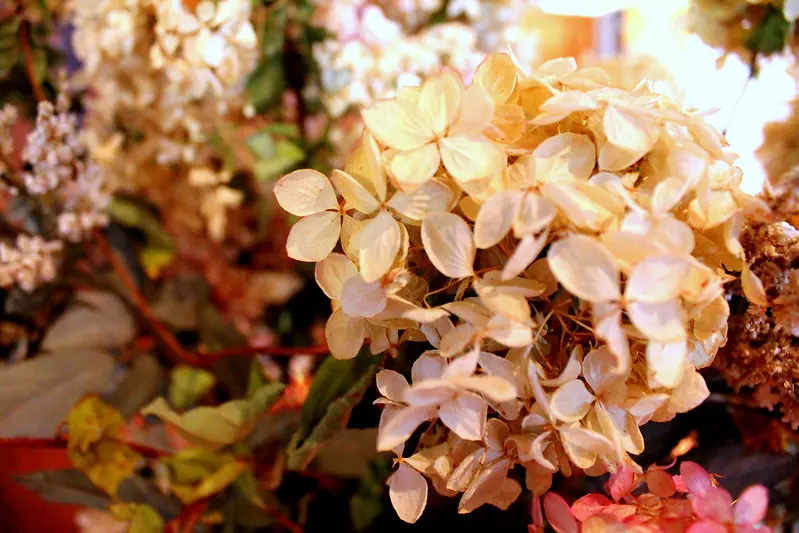
Learn effective methods to dry hydrangea heads, preserving their beauty for long-lasting floral arrangements. Explore techniques like air drying, water drying, and using silica gel.
Read More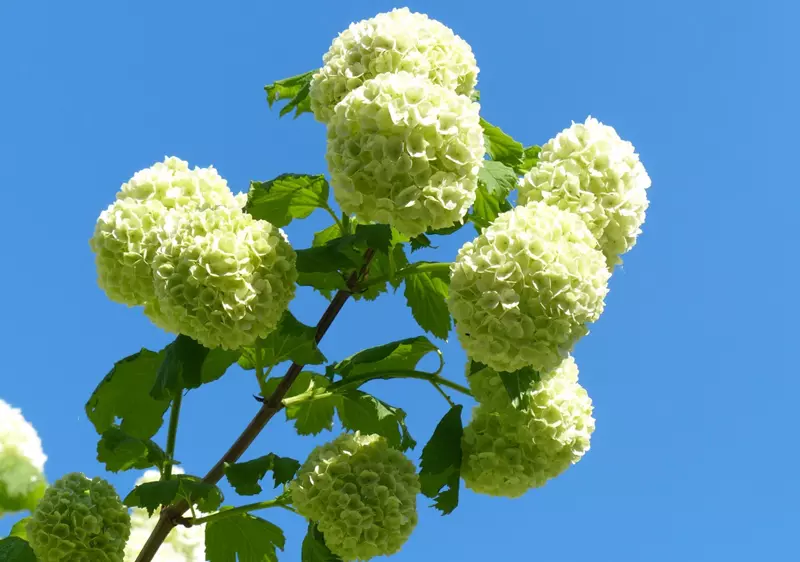
Learn about sun-tolerant hydrangea varieties and their care. Explore options like Hydrangea paniculata, quercifolia, and arborescens for bright, sunny gardens.
Read More